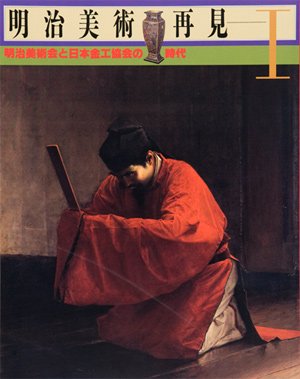| image | information |
|---|---|
 |
Museum of the Imperial Collections (Sannomaru Shozokan) houses a variety of domestic and foreign art from ancient to modem eras, but among them the paintings, sculptures and crafts of modem Japan from the Meiji to Showa eras form the largest and most variegated part of the collection. These were either presented to the royal family by the artist or high officials, purchased at expositions and other art exhibitions, or created according to orders by the royal family or the government. There are also pieces which were purchased by the Imperial Household Affairs Agency as furniture and ornaments for the Imperial castle or government buildings, which were added to the "Gyobutsu” (Imperial art collection) because of their artistic value, and then donated to this museum. We have introduced a part of our collection of Japanese modem art along with art from earlier periods according to each of the exhibition themes since this museum was opened, but have not yet had a chance to exhibit a large amount systematically. Therefore we have decided to focus on this group of Meiji art, and exhibit them according to various themes in a series of exhibitions of each genre. This exhibition called Reappraisal of Meiji Art 1 - The Era of Meiji Bijutsu-kai and Nihon Kinko Kyokai is the first of the series, where we shall introduce fine oil paintings which were rarely exhibited before, and the works of metal craftmen who had groped through the tradition and modernization of the Meiji Era trying to find their course of production among a variety. The factual history of oil painting (western style painting) in Japan begins around the Bunkyu period (1861-63) when pioneers such as Takahashi Yuichi began their attempts in the western art painting methods. After the Meiji restoration, during the trend of the westernization policy which was taken in Japan's politics, economy and culture, Kobu Bijutsu Gakko (Art School Attatched to the Technical College) was established in 1876 where orthodox oil painting methods were taught by the Italian painter Antonio Fontanesi and others. 0il painting was gradually accepted into the Japanese society. However, within the storm of nationalism which rose in reaction towards the sudden westernization, a harsh rejection against oil painting occured in the art world around the 1880's. After this era of severe trial for oil painting, western style artists united in order to arouse western style art expression once again, and formed the Meiji-Bijutsu-kai (Meiji Fine Arts Society) in 1889. This group held a total of 9 exhibitions until 1898, during which classical western art techniques of realism took root in Japan's art world. However, aside from this achievement, the expression of exhibited pieces adhered to realism which restricted the development of the Society. From our collection of Japanese modem oil painting, we have focused on 12 pieces by 12 artists who participated in the Meiji Bijutsu-kai exhibitions, but are not well known, and have left out the works well known and recently exhibited, of artist such as Takahashi Yuichi and Yamamoto Hosui. They are not necessarily all pieces which were exhibited in the Meiji Bijutsu-kai exhibitions, but are fine, rarely exhibited pieces which were painted in the same period that the Meiji Bijutsu-kai was active. The change in society brought by the Meiji restoration greatly effected each division of craft also. Craftsmen were forced to search for a new means to make a living because their former patrons, the Shogunate and feudal lords which was the former governing structure, had lost their economical power. The metal craftsmen had to find new ways to use their techniques of manufacturing sword furniture, because of the collapse of the samurai class and the ban of swords. The main course they took was to produce realistic and intricate crafts for export complying with the policy of the Meiji government, which was the promotion of exportation. The high quality technique and aesthetic sense of the Edo period was succeeded, but by around the 1890's, the establishment of a new style with new design fit for the new era was pursued, which was based on traditional technique and realism. Furthermore the Teishitsu Gigei-in (Court Artist) system established in 1890, and the nomination of Kano Natsuo as a Court Artist offered high prospects for the social position of metal craftsmen. In 1900, specialists in chokin (metal carving), tankin (metal hammering), and chukin (metal casting), who until then had been competing against one another for social superiority, united to form Nihon Kinko Kyokai (Japan Metalwork Association) aiming for the development of the entire metal craft world. In this exhibition, we introduce each division of metalwork systematically from early to late Meiji era, focusing on the metal craftsmen who participated in the Association. Furthermore, we will also exhibit works bronze sculpture which are closely related to casting and were not distinctly separated from meta1 work during the Meiji era, and cloisonné works which are close to metalwork having a metal base such as copper. |